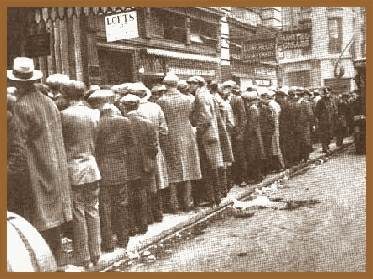|
PinkMonkey Online Study Guide-World History
14. 3 Republicanism at Home
While Isolationism was the main feature of the
1920s, it had grave consequences on the economy of the country.
Afraid of foreign competition the nation adhered to a policy of
protectionism. With support from farmers and businessmen, the Congress
dominated by Republicans, passed the Emergency Tariff Act in May
1921. Later in 1922, the Congress passed the Fordney-McCumber Act
which pushed the tariff rates up. Eight years later, Congress once
again passed the Smoot-Hawley Tariff in 1930. Amidst protests from
economists, President Hoover signed it. The Smoot-Hawley Tariff
Act raised the tariffs to the highest in American economic history.
In response to the U.S. tariffs, European countries
also raised their tariffs. The Tariff Acts in U.S. reflected the
growing nationalism of the 1920s. Another symbol of this post-war
nationalism was the countrywide demand to restrict immigration.
After the war, a large number of foreigners came to America. To
check the influx of immigrants, the Congress introduced the quota
system in the Emergency Quota (1921).
Later in 1924, the Congress under President Coolidge
passed the Immigration Act to tighten immigration laws. The 1924
Immigration Act fixed national quotas at 2% of the number of a nationality
which had lived in the U.S. in 1890.
The Great Depression (1929 1939) is one of the
most tragic events to have occurred in American history.
The crash of 1929 was not the first Depression
in the U.S. In fact the period from the 1870s to the 1920 saw two
major Depressions and several minor ones. The 1920s also began with
a Depression in 1921. From 1923 onwards, business boomed. So much
so that this period was called the Golden Twenties. Most people
in the 20s could afford to buy automobiles, radios, build houses
and even visit Europe. In the 20s, the U.S. appeared to be extremely
prosperous. Real wages were one of the highest productivity per
person increased by 30% and there was plenty of capital around for
investment.

Exhibit 14.1
With the Depression the rate of Unemployment soared.
The Depression years set in with the stock market
crash along with a slump in farm prices. Ten of thousands of people
lost their jobs. Production came to a grinding halt, causing great
agony and distress all over the country.
|